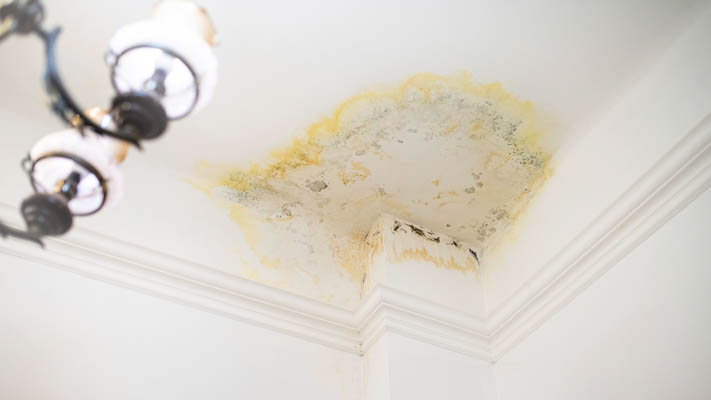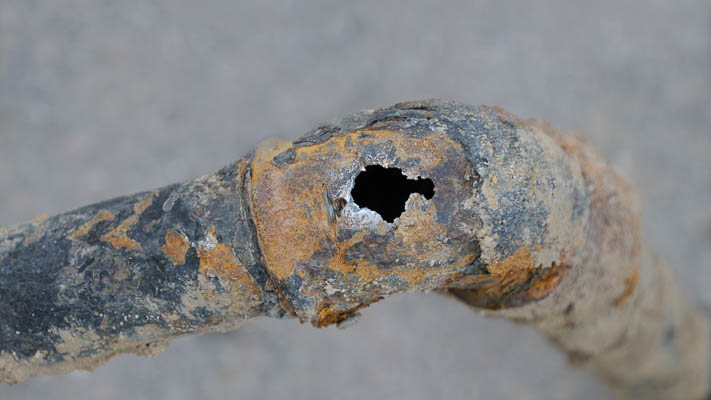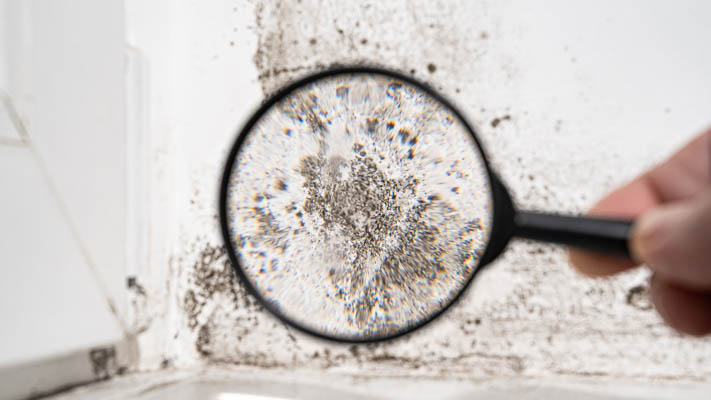How Can I Test for Mold in My Home?
Detecting mold early is key to preventing its spread. While some mold is visible and easy to spot, it often grows in hidden areas that might be harder to see until it's too late.
There are a few ways to test for mold in your home:
- Look for Visible Signs: Mold can appear as black, green, white, or even orange spots on walls, ceilings, floors, and around plumbing fixtures. Peeling wallpaper, warped flooring, and discolored patches can also indicate mold growth.
- Follow Your Nose: Mold has a distinct, musty odor. If you notice persistent damp smells in certain areas of your home—especially near bathrooms, basements, or kitchens—mold could be present, even if you can't see it.
- Use DIY Mold Testing Kits: Home mold test kits are available at hardware stores and can detect airborne mold spores. While these kits can give an indication of mold presence, they may not pinpoint the exact source. You can easily purchase these kits at Home Depot.
- Hire a Professional: If you suspect widespread mold, professional mold inspectors use infrared cameras and air quality tests to locate hidden mold growth, especially in walls and under flooring. While we at Repipe Specialists don't perform mold inspections, feel free to contact us, and we may be able to provide local referrals in your area.

There are several easy ways to identify mold caused by water leaks in your home.
Catching mold early can prevent serious damage to your home. If you find mold, the next step is to determine the cause.
Get your free estimate today
With over 75,000 repipes completed, we've perfected our One-Stop Repipe™ for your home.
What Causes Mold to Grow Inside a Home?
Mold thrives in moist, poorly ventilated environments such as behind walls, ceilings, and beneath floors. Some of the most common causes of indoor mold growth include:
- Condensation Build-Up: High humidity, especially in poorly ventilated areas like bathrooms and kitchens, can lead to condensation on walls and ceilings, promoting mold growth.
- Poor Ventilation: Without proper airflow, moisture lingers in the air and settles on surfaces, creating damp conditions where mold thrives.
- Flooding or Past Water Intrusion: Even after water is removed, residual moisture can remain in drywall, insulation, and subfloors, allowing mold to develop over time.
- Leaks and Water Damage: Whether from a burst pipe, a slow plumbing leak, or roof damage, any standing water or excess moisture can create the perfect conditions for mold.
While mold can develop from a variety of sources, one of the most common and preventable causes is an outdated plumbing system. For a detailed breakdown, we have an article dedicated to mold caused by plumbing leaks.
How Does an Outdated Plumbing System Contribute to Mold?
Outdated pipes are one of the major hidden contributors to mold growth. Slow, undetected leaks from old pipes can release moisture into walls, ceilings, or floors, creating the perfect environment for mold to thrive.
Materials like galvanized steel and polybutylene plumbing deteriorate over time, increasing the likelihood of small leaks that go unnoticed until significant mold damage occurs.

Additionally, older plumbing systems are more prone to sudden pipe bursts or failures, leading to rapid water damage that accelerates mold growth. Even trusted materials such as copper can experience pinhole leaks as they age, leading to leaks and mold growth.
Hidden leaks in walls or under floors can persist for months before any visible signs appear, making them one of the trickiest mold sources to detect. Poor drainage and clogged pipes further exacerbate the problem, as standing water increases indoor humidity levels and fosters mold growth.
If your home has outdated plumbing, addressing leaks promptly and considering a repipe can help eliminate mold risks at their source.
Should I Repair or Replace Outdated Plumbing to Avoid Mold Growth?
When dealing with mold caused by plumbing issues, homeowners often wonder whether repairing or replacing pipes is the better solution.
If you experience frequent leaks, notice discolored water, or have outdated materials like galvanized steel or polybutylene, repiping is the best choice to prevent recurring mold issues.
While repairs can offer a temporary fix, constantly patching old pipes can be very costly over time. We have seen first hand the cost of multiple pipe repairs far exceed the cost of a full home repipe.
Repiping effectively eliminates any ongoing leaks, preventing future mold growth caused by outdated plumbing. This makes it a far more cost-effective long-term investment compared to repairing. For specific information, read our article breaking down the cost effectiveness of repiping over repairing.
How to Prevent Mold From Returning After Fixing a Leak
Once the outdated plumbing issue is resolved, it's crucial to take steps to prevent mold from coming back. Here are our five tips to stop mold from returning:
- Dry Affected Areas Thoroughly: Use fans, dehumidifiers, and open windows to fully dry any water-damaged areas. Mold can begin growing within 24-48 hours of water exposure.
- Improve Ventilation: Install exhaust fans in bathrooms, kitchens, and laundry rooms to reduce humidity and prevent condensation buildup.
- Use Mold-Resistant Materials: If you're replacing drywall or insulation, opt for mold-resistant products to deter future growth.
- Monitor for Future Leaks: Regularly inspect plumbing fixtures, under-sink areas, and ceilings for signs of moisture to catch potential leaks early.
- Consider a Full-Home Repipe: If your home has ongoing plumbing issues, repiping with materials such as Uponor PEX-A tubing can provide a permanent solution to prevent leaks and mold growth.
By taking these proactive steps, you can maintain a mold-free home and avoid costly repairs in the future.
If your home has aging plumbing, a professional full-home repipe can provide you with the peace of mind knowing that the risk of mold-related damage is greatly reduced. Contact us to have one of our local repipe consultants explain your repipe options and provide you with a consultation and quote, either in-home or remotely.
Get a Quote for Repiping Your Home
Here at Repipe Specialists, we've permanently fixed leaks in thousands of homes using both copper piping and PEX tubing. We continually receive positive customer feedback about their overall home repipe experiences and often exceed their expectations in the following areas:
- Speed: Our repipe crews typically complete a repipe in a day, returning on another day for wall patching.
- Convenience: Through our One-Stop Repipe™ Process, we handle everything from permits, to wall patching, to inspections.
- Cleanliness: Our crews are trained to protect your home while working (we cover all surfaces with protective sheeting), and to clean up fully at the end of each day.
- Peace of Mind: Repipe Specialists is a fully licensed plumber in every state we operate in, and we back all of our repipes with a lifetime warranty.
- Financing programs: To help take the sting out of unplanned repipe expenses, we offer several financing programs.
- Price: As a specialist that performs hundreds of repipes a week, we can deliver high quality repipes at a lower cost vs generalist plumbers. Our quotes typically range from $4,500 to $15,000 depending on the size and complexity of your project. We have an article that covers repipe cost factors in detail.
Schedule a free in-home consult, and one of our local repipe consultants will explain all your repipe options and provide you with a written, fixed-price quote. Fight mold, repipe outdated pipes.

